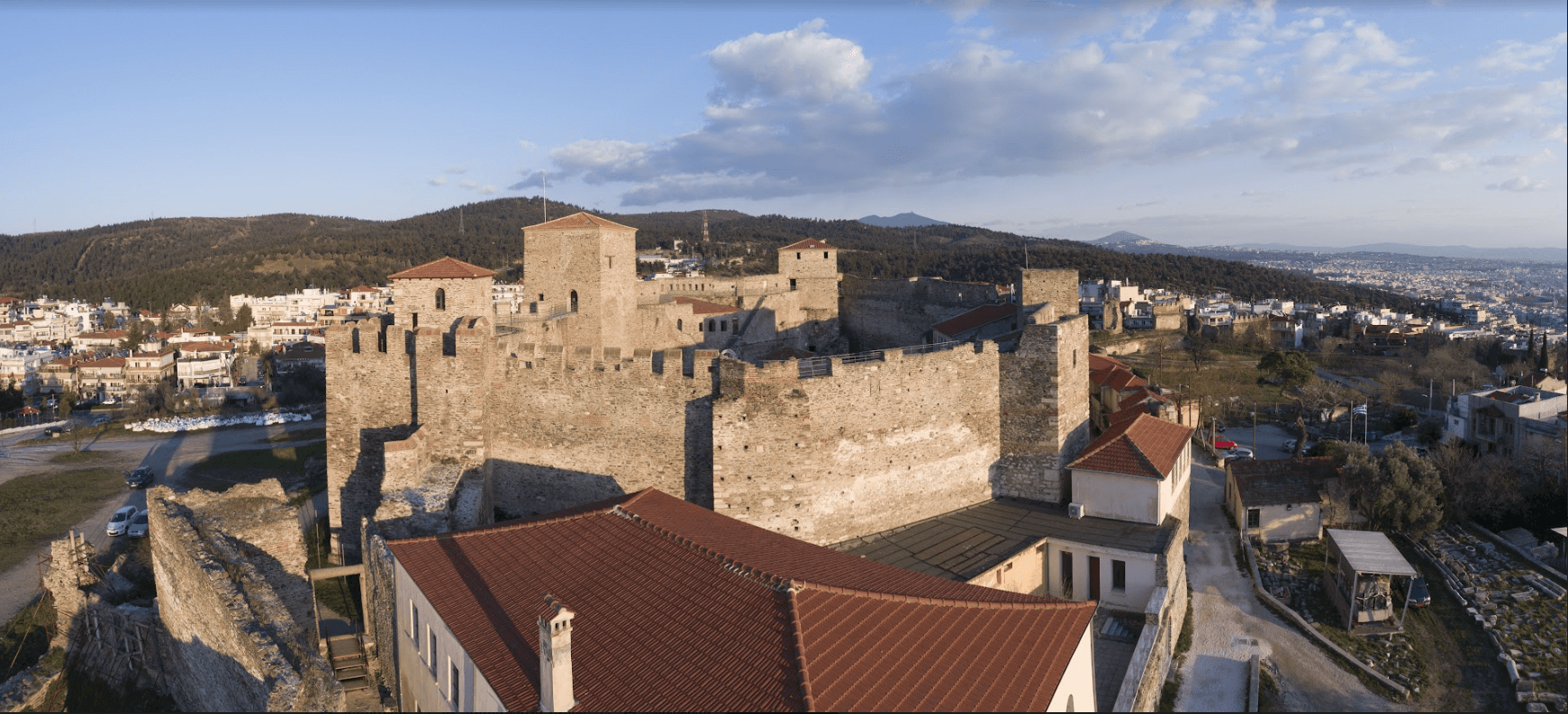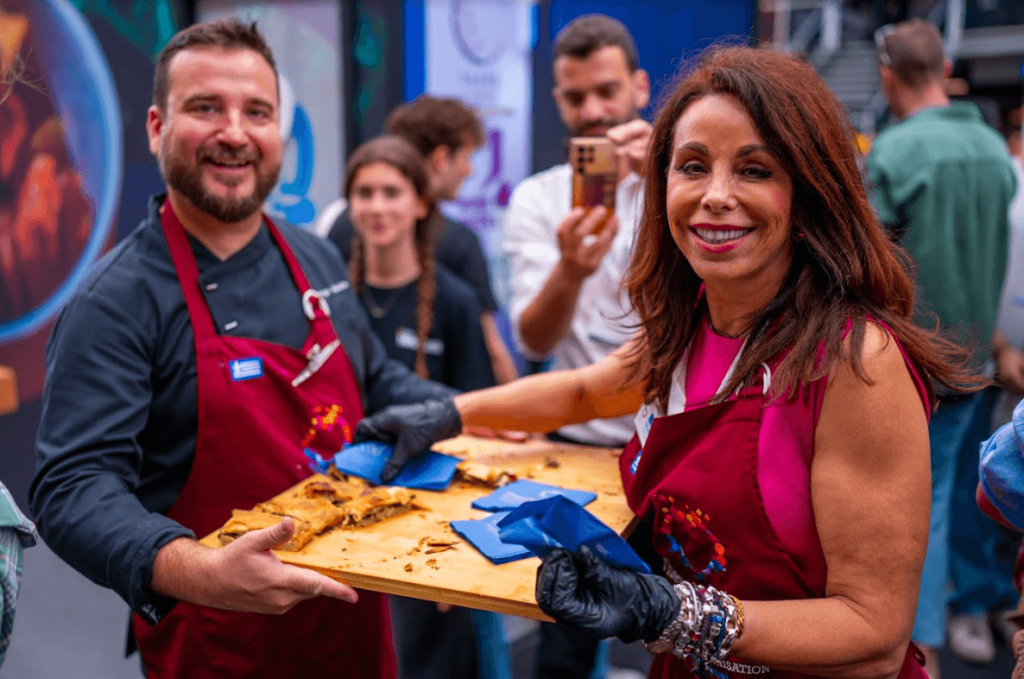CNN Travel, with 2.5 million subscribers, recommends Thessaloniki as one of the best city break destinations in Europe for 2023.
The same recommendation is made by TIME magazine and The Guardian. Also, the first Greek female Olympian, deputy regional governor of the Thessaloniki Metropolitan Area, and head of the Tourism Promotion and Marketing Organization, Voula Patoulidou, emphasizes that “to reach the point where three of the world’s most renowned media recommend Thessaloniki as an ideal city break, it means that our efforts and hard work have not been in vain.”
“Certainly not in vain were the fam trips with well-known influencers, bloggers, and travel journalists, as well as top travel magazines. Our presentations at major tourism exhibitions abroad in London and Berlin ‘took off,’ and our features in international magazines, such as National Geographic Food, came to fruition.”
“We pursued it, and this is one of the successes we desired. We seek more because Thessaloniki is a multifaceted city that delights in rising with the labels that attract tourists like a magnet. Because they suit her, they belong to her. Because she embodies these labels: a UNESCO city of gastronomy, the only Byzantine city in Europe. The city of Saint Demetrius with 15 unique early Christian, Byzantine, and post- Byzantine monuments and castles, pride monuments on the World Heritage Map. A city-port, the home port of cruising, a ‘romantic city’ for many, a city of major exhibitions and conferences, certainly beloved by all, safe for visitors, and hospitable.”

“There are 10 different forms of tourism developing in Greece, and in all ten, Thessaloniki and its wider region are present, whether it is mass tourism or alternative,” says Ms. Patoulidou.
“I think, she added, that what makes Thessaloniki an ideal city break destination is its… skin: its people, its thousand-year history, its culture that unites people and worlds. Aristotle Square, Ladadika, the White Tower, the Rotunda, the Byzantine Bath, the frescoes of St. Nicholas the Orphan, the Umbrellas, and Alexander the Great, the old port and the Heptapyrgion. It is the column of this skin that scatters memories, like spreading freshly baked bagel on Tsimiski Street, bougatsa on Egnatia, bread, entertainment, unique flavors in well-kept shops, five-star hotels with value for money on the table, 30 museums, and many historical paths. One might say that other cities have them too. And yet. No other city is so well suited for a visit and pilgrimage at the same time. For history and myths. For sports and relaxation. For hiking and a view from Ano Poli and a beautiful sunset from its beach. For food, for coffee, and sweet… For culture, exploration, history, well-being, architecture, entertainment, and experience. And no other city in Europe that you will visit for 2-3 days can show you Mount Olympus, the capital of ancient Macedonians (Aegae), and the golden beaches of Chalkidiki…”
These and… many more are what make it ideal for a city break. ‘These and the Christmas and New Year’s celebrations, every year,’ replies the president of the Tourism Organization. The city has recorded the highest numbers of overnight stays and mobility of Balkan and European tourists during the holiday seasons. These years, she says, have been a ‘tangible’ confirmation of the joint effort of the entities participating in the Organization, which had begun before 2020, aiming at the reinforcement and promotion of tourism forms such as city breaks, which are ideal for tourists throughout the year. These and… many more are what make it ideal for a city break.
‘These and the Christmas and New Year’s celebrations, every year,’ replies the president of the Tourism Organization. The city has recorded the highest numbers of overnight stays and mobility of Balkan and European tourists during the holiday seasons. These years, she says, have been a ‘tangible’ confirmation of the joint effort of the entities participating in the Organization, which had begun before 2020, aiming at the reinforcement and promotion of tourism forms such as city breaks, which are ideal for tourists throughout the year.
“Thessaloniki has not unfolded all its advantages in tourism as we would like and as the (strategic) planning dictates that we follow. However, its inclusion in the list of cities suitable for a lovely European break (a two-day or three-day getaway) is something we desired, pursued, and achieved in recent years.”
The 15 UNESCO monuments, the tourist exploitation of the major excavations and their significant findings along the metro line, traditional festivals and events, the city’s capacity for organizing conferences and major events in sports, athletics, and hosting sporting events such as long-distance races or marathons, basketball and football, rowing, sailing, and yachting are advantages that could further enhance their tourism utilization along the shores of the Thermaic Gulf.
“The Tourism Organization remains fully adapted to the new realities of the tourism market,” says Ms. Patoulidou. “Moreover,” she adds, “adapting to the advantages that Thessaloniki offers as a tourist destination and to new trends is our permanent commitment to the strategy of promotion and marketing”

Alexis Tsaxirlis, Director of Exhibitions at TIF-Helexpo: Thessaloniki is the emerging city of MICE.
However, according to Alexis Tsaxirlis, Director of Exhibitions at TIF- Helexpo, what needs greater attention and to be highlighted again as one of Thessaloniki’s strengths is MICE tourism (Meetings, Incentives, Conferences & Exhibitions).
TIF-Helexpo, the official exhibition agency of Greece with a 97-year history, is the strongest brand name in Thessaloniki, and Mr. Tsaxirlis, not only from his position but also from his educational and professional background, emphasizes that Thessaloniki is the emerging city for MICE (Meetings, Incentives, Conferences & Exhibitions). As it has not yet competed for the organization of major events, MICE tourism should be one of the national goals for Greece, as it offers advantages that mass tourism does not address.
It is tourism throughout the year, focusing on the months outside the summer. Therefore, there is no overcrowding of visitors observed during the summer vacation months, but visitation is spread over the 9 months of the other seasons, and this is significant due to the apparent observation that the infrastructure (roads, airports, networks, etc.) of a city-region is not ‘strained.’ Environmentally and socially, MICE tourism is also the most balanced and better-manageable compared to mass tourism, offering year-round employment and balanced development.
Based on studies by the World Tourism Organization, MICE (Meetings, Incentives, Conferences & Exhibitions) generates five times the revenue of mass tourism. That is, one euro spent by a visitor during the summer is at least five euros for MICE visitors (conference attendees, exhibitors, etc.) in the other months of the year. If Thessaloniki had a strongly developed MICE tourism, the hotels in Halkidiki would be open outside the summer season. We shouldn’t be concerned with how many millions of tourists come to Greece every year but rather with “fewer tourists with greater revenue.”
“As demonstrated by successful practices in other countries, a strong, self-funded entity (supported by businesses, public entities, local government, etc.) is needed to strategically promote the city and the broader region as a MICE destination. Naturally, the management of this entity must be highly effective.”
According to the director of exhibitions at TIF-HELEXPO, “a city or region that has the appropriate infrastructure and facilities (hotels, conference centers) for hosting large conferences, meetings, sports, cultural, and artistic events should also be aware that an international visitor attending such events, for example, a conference delegate, is statistically likely to visit the city three more times over the next decade, subsequently as a regular tourist.”
“Thessaloniki has its history, its geopolitical, geostrategic, and geoeconomic position, but with the existing infrastructure (hotels, conference centers, concert halls, indoor and outdoor venues, theaters, etc.), it can now host large events that bring value to the city. In this equation, we must also consider the three major universities that Thessaloniki has because all three can organize significant events. However, these events need to be actively pursued to come to the city, and this pursuit requires comprehensive support from the municipality and all other stakeholders to succeed,” emphasizes Tsaxirlis. He also points out that when the organization is complete, the most important aspect is that participants have enjoyed the overall image of a city and a region, in order to convey the message to their world.”
“The city provides all the guarantees (entertainment, sightseeing, good food, well-being) for a MICE visitor to have a great time. In addition to these, Thessaloniki has in its surroundings places that have an exceptional historical footprint that is hard to find elsewhere, such as Mount Olympus, Vergina (Aigai), Aristotle’s Stagira, the Petralona Cave, Potidaea, the canal of Xerxes, and more.”
After the pandemic, there may not be an immediate return to the pre-2020 situation in MICE tourism (essentially zeroed during the pandemic for conferences and international meetings). However, it is estimated that by 2025, there will be a rebalancing, at least for large scientific conferences, as in-person participation is considered preferable due to the possibilities of travel and tourism extension.
The official exhibition organizer of the country, looking towards the future, has developed in recent years two new exhibitions: Beyond (a technology and innovation exhibition) and Forward Green & Renewable Energy Tech (circular economy and energy). Every year, it hosts the largest primary sector exhibitions, including Agrotica (considered the third-best agricultural exhibition in Europe), Zootechnia, and the purely export-oriented Freskon (ranked as the fifth-best in Europe). It also organizes the country’s unique, large-scale tourism exhibition, Philoxenia. Additionally, the two largest exhibitions in the field of Jewelry, as well as DETROP, Artozyma, Oinos, etc., are organized by DETh-Helexpo. The International Book Fair (in collaboration with the Foundation of Hellenic World) is also one of the most visited exhibitions. These, along with 10 other private exhibitions, conferences, and other events, cover 270 days of the annual activity cycle of the Thessaloniki exhibition center.
EDITOR: LINA TSINGANA
VERSION IN ENGLISH: LINA TSINGANA

